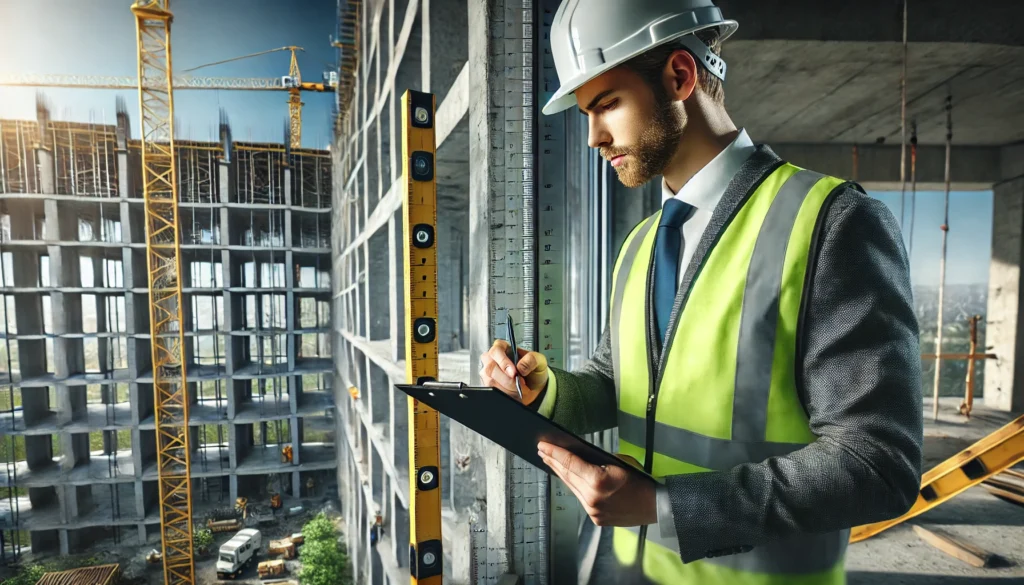Building condition assessment is a crucial process in the construction and real estate industries, ensuring that buildings are safe, functional, and compliant with regulatory standards. This process involves a thorough evaluation of a building’s structural integrity, mechanical systems, and overall condition, identifying any necessary repairs or upgrades. In Malaysia, building condition assessments are conducted in accordance with both international and Malaysian standards, providing a robust framework for maintaining building quality. This blog explores the key aspects of building condition assessment in Malaysia, with references to relevant standards and practices.
What is Building Condition Assessment?
Building condition assessment involves a systematic examination of a property’s physical state, covering elements such as structural components, mechanical systems, electrical installations, and the overall building fabric. The goal of this assessment is to provide a comprehensive overview of the building’s current condition, identifying any existing or potential defects that may require attention.
Importance of Building Condition Assessment
Building condition assessments are vital for several reasons:
- Safety Compliance: Ensures that the building meets safety standards, preventing hazards that could endanger occupants.
- Maintenance Planning: Provides a detailed report that helps property owners plan for maintenance and repair works, extending the building’s lifespan.
- Regulatory Requirements: Helps ensure compliance with local building codes and regulations, which is crucial for legal and insurance purposes.
- Investment Protection: Identifies potential issues that could affect the value of the property, allowing for informed decision-making in property transactions.
Key Components of Building Condition Assessment
A comprehensive building condition assessment typically includes several key components, each of which is guided by specific standards.
1. Inspection Malaysia
Inspection Malaysia refers to a systematic examination of various aspects of a building to assess its overall condition. This includes checking the structural integrity, roof condition, electrical systems, plumbing, and HVAC systems. Inspections are conducted in line with the Malaysia Standard (MS), particularly MS 1064 for structural inspections, and MS 1525 for energy efficiency and use of natural resources in buildings.
2. Survey of Building
Building surveys involve a detailed evaluation of the building’s structural and non-structural elements. In Malaysia, these surveys are often conducted following the guidelines provided by the Royal Institution of Surveyors Malaysia (RISM) and in accordance with ISO 41001, which provides standards for facility management, ensuring that building operations are effectively maintained and optimized.
3. Defect Inspection
Defect inspection is a critical part of the building condition assessment process, focusing on identifying faults or defects within the building. This process is guided by the Quality Assessment System in Construction (QLASSIC) under CIDB Malaysia, which provides a standardized approach to assessing the workmanship quality of building projects. QLASSIC is aligned with ISO 9001, ensuring that defect inspections meet international quality management standards.
Role of Malaysian Construction Companies in Building Condition Assessment
Malaysian construction companies play a crucial role in conducting building condition assessments. These companies typically offer comprehensive inspection services, utilizing their expertise in construction to identify issues that might not be immediately visible. They are guided by CIDB guidelines and the Construction Industry Transformation Programme (CITP), which emphasize the importance of maintaining high standards in building quality and safety.

Integrating Building Information Modeling (BIM) in Building Condition Assessment
Building Information Modeling (BIM) is increasingly being integrated into building condition assessments in Malaysia. BIM provides a digital representation of the building, which can be used to visualize and analyze its current condition. This integration offers several benefits:
- Enhanced Visualization: BIM allows stakeholders to visualize the building’s condition in 3D, making it easier to identify and understand defects or areas that require attention.
- Data Management: BIM helps manage and store all building-related data in a centralized system, ensuring that information about the building’s condition is easily accessible and up-to-date.
- Predictive Analysis: By using BIM, construction companies can simulate different scenarios and predict the potential impact of defects on the building’s future performance. This helps in proactive maintenance planning.
The use of BIM is guided by the ISO 19650 standard, which provides a framework for managing information over the whole lifecycle of a building using BIM.
Process of Conducting a Building Condition Assessment
Conducting a building condition assessment typically involves the following steps:
- Pre-Assessment Preparation
- Gather all necessary documentation, including building plans, maintenance records, and previous inspection reports.
- Define the scope of the assessment, outlining which areas of the building will be inspected and what specific aspects will be evaluated.
- On-Site Inspection
- Conduct a detailed on-site inspection, using specialized tools and techniques to evaluate the building’s structural integrity, mechanical systems, electrical installations, and overall condition.
- Take photographs and notes to document any defects or areas of concern.
- Analysis and Reporting
- Analyze the data collected during the inspection to identify patterns or trends that could indicate underlying issues.
- Prepare a comprehensive report that includes a detailed description of the building’s condition, the defects found, and recommendations for repairs or further investigation.
- Follow-Up and Maintenance Planning
- Based on the assessment report, develop a maintenance plan that prioritizes the repair of critical defects and outlines a schedule for ongoing maintenance tasks.
- Conduct follow-up inspections as needed to ensure that repairs are carried out effectively and that the building remains in good condition.
Costs of Building Condition Assessment in Malaysia
The cost of conducting a building condition assessment in Malaysia can vary depending on several factors, including the size of the building, the complexity of the assessment, and the expertise of the inspectors involved. Here is an overview of typical costs:
- Basic Inspection: For a standard residential property, basic inspection costs can range from RM1,000 to RM3,000.
- Comprehensive Survey: For larger or more complex buildings, a comprehensive survey could cost anywhere from RM5,000 to RM20,000 or more, depending on the scope of the assessment.
- BIM Integration: If BIM is used in the assessment, additional costs may be incurred for the creation and analysis of the digital model, which could range from RM2,000 to RM10,000 depending on the level of detail required.
Conclusion: Ensuring Longevity and Safety Through Building Condition Assessment
Building condition assessments are a critical tool for property owners, developers, and investors in Malaysia. By conducting thorough inspections, surveys, and defect inspections, and integrating advanced technologies like BIM, stakeholders can ensure that buildings remain safe, functional, and compliant with all relevant standards. Regular assessments not only protect the value of the property but also contribute to the overall safety and satisfaction of its occupants.
Contact Us for Professional Inspection Services in Malaysia
At Pro Inspect Solution, we pride ourselves on offering comprehensive inspection services to meet your property needs. Whether you require a detailed building inspection, a thorough property inspection for both residential house and commercial properties, or specialized services like pemeriksaan bangunan berkala, non-destructive testing and structural assessments, our team of experts is here to assist you.
Why Choose Us?
- Experienced Inspectors: Our inspectors are highly trained professionals with extensive experience in the industry.
- Comprehensive Reports: We provide detailed inspection reports that are easy to understand, helping you make informed decisions.
- Cutting-Edge Technology: We utilize the latest tools and techniques to ensure the highest accuracy in our inspections.
- Customer Satisfaction: Your satisfaction is our top priority, and we are committed to providing excellent service every step of the way.
Get in Touch with Us
Ready to schedule your inspection or have questions about our services? We’re here to help. Contact us today to discuss your specific needs or to get a quote.
How to Reach Us:


